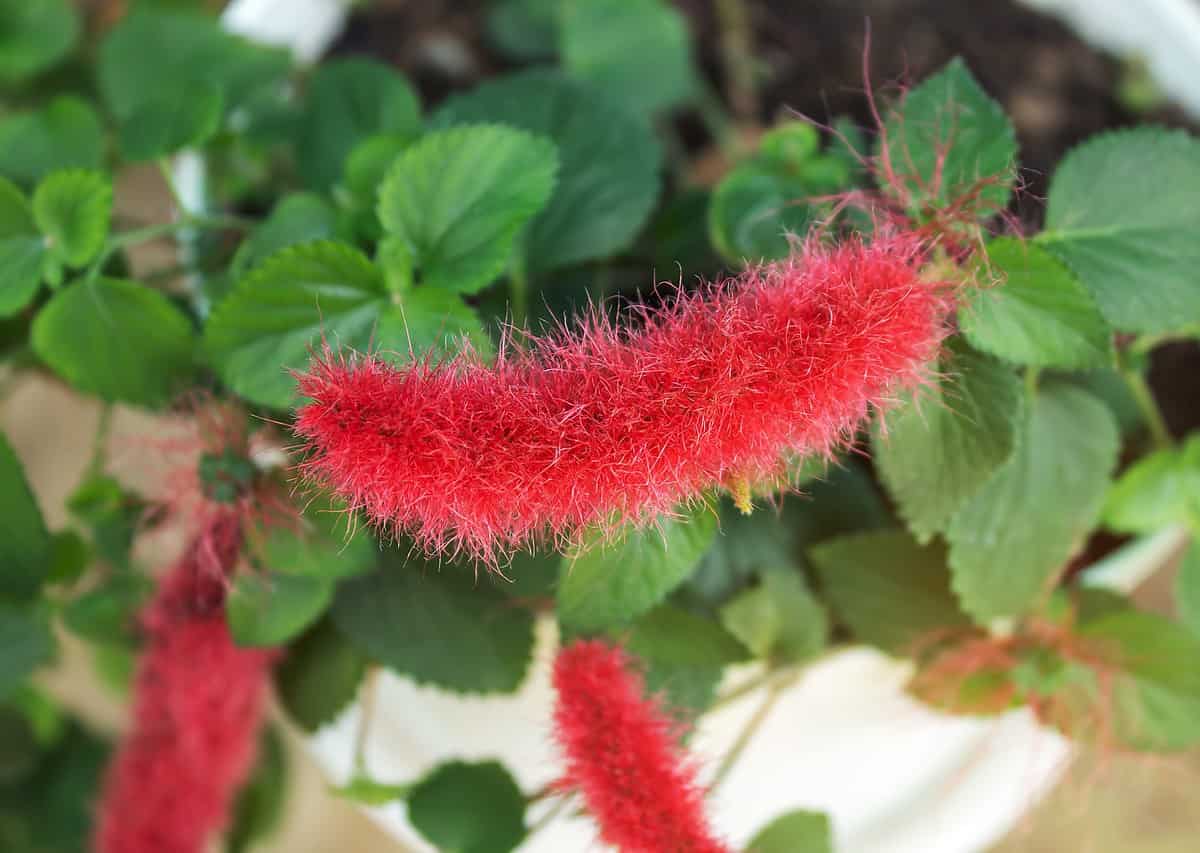If you enjoy collecting unusual tropical ornamentals for your garden, here’s a real attention getter: the chenille plant, Acalypha hispida, known as felpilla in Spanish, a plant native to Malaysia that is now found in tropical regions around the world.
This shrub of the Euphorbiaceae family is a close relative to the poinsettia, called pastora here. Chenille is easy to recognize by its red spikes of small pistillate flowers that often grow up to 40 centimeters long and look something like cattails. This plant is fun to touch and feel; its fuzzy, velvety flowers bring on squeals of delight from youngsters, and the flowers make a unique addition to any flower arrangement.
The chenille plant is available in leading nurseries around the country, or you can propagate your own from woody stem cuttings taken from mature shrubs. It’s best to start 30-centimeter cuttings in plastic nursery bags or recycled containers filled with prepared potting soil. Keep them in a shady place in the greenhouse or on the porch, and water to keep them moist at all times. When the stem cuttings begin to produce new foliage, move them gradually to a sunnier location.
After three months, they can be transplanted to permanent sites around the home.
It’s interesting to note that the seeds of these plants don’t germinate; that’s because the chenille plant is dioecious, with male and female reproductive flowering parts produced on separate plants. Papaya and rambutan are two other examples of dioecious plants.
In the case of chenille, the showy red flowering spikes are the female plants, while male plants have inconspicuous pollen-producing flowers.
Because male chenille plants are rarely grown – I’ve never seen one – the seeds from the female plants remain sterile and don’t germinate when planted.
Chenille plants love warm weather and grow well in low and mid-range elevations of the country. However, they are not tolerant to salt breezes on the beach.
Apart from this, they are hardy shrubs that do well in a wide range of soils, provided they are well drained. They like full sun for optimal flowering. Their bright red flowers highlight green shrubbery in the garden, or they can be grown in large pots or containers on patios or porches, kept compact by pruning.
In Costa Rica, chenille plants flower consistently during the rainy season but often go dormant during the dry season, particularly without irrigation. The foliage is susceptible to scale, mites and aphids, which can be controlled with applications of natural soapy-water sprays.






